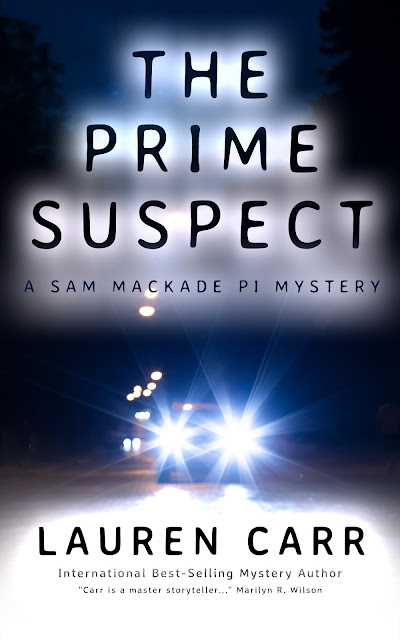An Interview with Anne Pfeffer:
LCR: Welcome to my blog, Anne! So tell me...what is your writing process like?
AP: I’m a “pantser,” i.e. I write by the seat of my pants. I usually start with the germ of an idea and just sit back, write, and see what happens. Not surprisingly, I do a lot of rewriting, as I’m forced to go back and add everything I didn’t know when I wrote the earlier draft.
I don’t really enjoy writing that first draft, when I’m getting the bones of the story on paper. It’s the later versions that are fun, when I can feel the book getting better and better. By the time I’m done, I know my characters inside and out. I’m fond of them, particularly the male ones. They’re the only men in my life who do exactly what I want them to do!
LCR: What made you want to write this book?
AP: The original kernel of an idea came from the road I lived on for fifteen years in the Hollywood Hills—a rutted, one-lane track that ran along the side of a canyon past our home and up to a beautiful lot with a view of the city. A single mother lived there with her daughter. Sometimes our homes seemed to me these perfect, secluded hideaways from the world, but on a really dark, stormy night, mine, at least, felt lonely and vulnerable.
Our neighbor was a social creature who always had friends coming up and down the road for parties and gatherings. I thought it would be fun to write about a single mother living in this setting; thus, the birth of Nicole Adams and her son Justin in What We Do for Love. Nicole, Justin, and my other characters were invented by me and, beyond the initial premise, any resemblance to real people is accidental; similarly, I made up the events of this book from my imagination.
So, although the people and events of this book are fictitious, you can rest assured that the Trail of Terror is real. I’ve lived there.
LCR: What do you believe is the hardest part of writing?
AP: For me, the hardest part is making sure that I’m conveying information in exactly the way I hope to. Like when I hope to portray a character as, say, dark yet lovable in an interesting sort of way, sarcastic yet vulnerable … how do I know I haven’t missed the mark? How do I know I haven’t inadvertently made her look like a b&$%#tch on wheels?
That’s when beta readers, or editors, or any honest eyes become helpful. These are people who will tell you in a kind, constructive way that you need to rethink your approach. That your leading lady is cruel and malicious (which is okay if you meant her to be that way, but not okay if you didn’t).
It’s also exactly the time to listen to that little voice in your head. You know, that little warning we all like to ignore that says you took that too far or that joke isn’t funny. But we don’t pull back, or we use the bad joke, and we fall flat on our faces.
My advice is, don’t do that.
LCR: How much research do you do for your books?
AP: It depends on the subject matter. Little research was necessary for
What We Do for Love, while others of my books have required quite a lot.
Luckily, virtually every human experience seems to be on Youtube. For
The Wedding Cake Girl. I’ve dived vicariously among treacherous columns of kelp and alongside a 600-pound sea bass. For
Girls Love Travis Walker, I’ve climbed ladders and blasted water from the hoses of a virtual fire truck. I’ve done those things, so I can write about them.
Even very mundane things, like a drive up the 5 freeway from LA to Santa Cruz, have been recorded by someone who actually thought to strap a camera onto his dashboard – handy if you need to describe a certain freeway exit.
LCR: How do you handle critical remarks about your books?
AP: For the most part, I actually solicit remarks about my books, either before publication, so I can rewrite and improve them, or after publication, so I can sell them. Although I don’t love hearing about the weaknesses in my books, I can’t really fault the people who point them out to me. They’re either being constructive and trying to help me improve my book, or they’re giving the public their honest opinion, which is exactly what they’re supposed to do.
So I generally just try to learn something from these types of comments and, if it’s not too late, I’ll try to fix the problem. Yeah, I’ve been known to kick a few walls and punch a few pillows, but only in the privacy of my home.
LCR: What advice do you have for other writers?
AP: My advice would be to write something you love, something you want to read, that reflects you and what you believe. It’s the only way your book will ring true and resonate with readers.
Don’t write a romance just because romances sell, or a paranormal thriller because they’re the next big thing. For your book to succeed, it should be authentic. It needs to be something only you could write.
LCR: How can your readers discover more about you and your work?
Go to my website at
www.annepfefferbooks.com. There you can read descriptions and excerpts of each of my books. Or, even easier, I’ve got a one-sentence description of each below.
What We Do for Love: When sixteen year old Justin brings home a girl who’s bearing his child and has been thrown out of her house, it is up to his single mother, Nicole, to take the girl in.
Just Pru: When shy, anxious Pru loses her apartment in a building fire, she learns how to make friends and find love.
Girls Love Travis Walker: Despite his sexy charm and good looks, Travis must struggle to get the job and girl that he wants.
The Wedding Cake Girl: When expert scuba diver Alexandra wants to leave her island home for college, she must stand up to her difficult, demanding mother.
Any Other Night: After Ryan’s friend Michael dies with a secret, Ryan must take over Michael’s unfinished business.
Award-winning novelist Anne Pfeffer grew up in Phoenix, Arizona reading prodigiously and riding horses. After working in Chicago and New York, she escaped back to the land of sunshine in Los Angeles.
She has worked in banking and as a pro bono attorney, representing abandoned children in adoption and guardianship proceedings. Anne has a daughter living in New York and is the author of four books in the YA/New Adult genres.






































